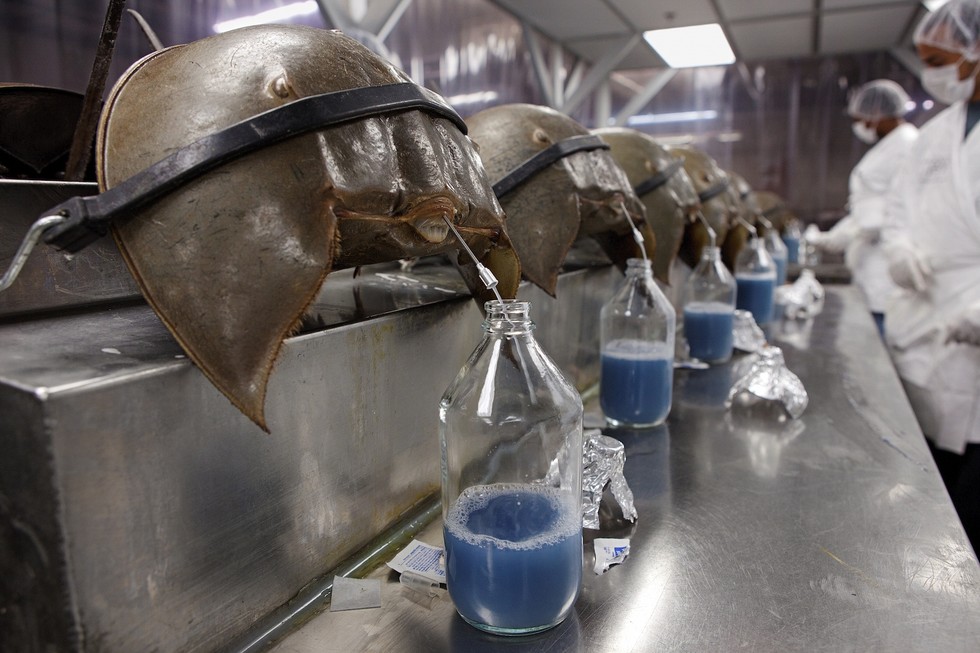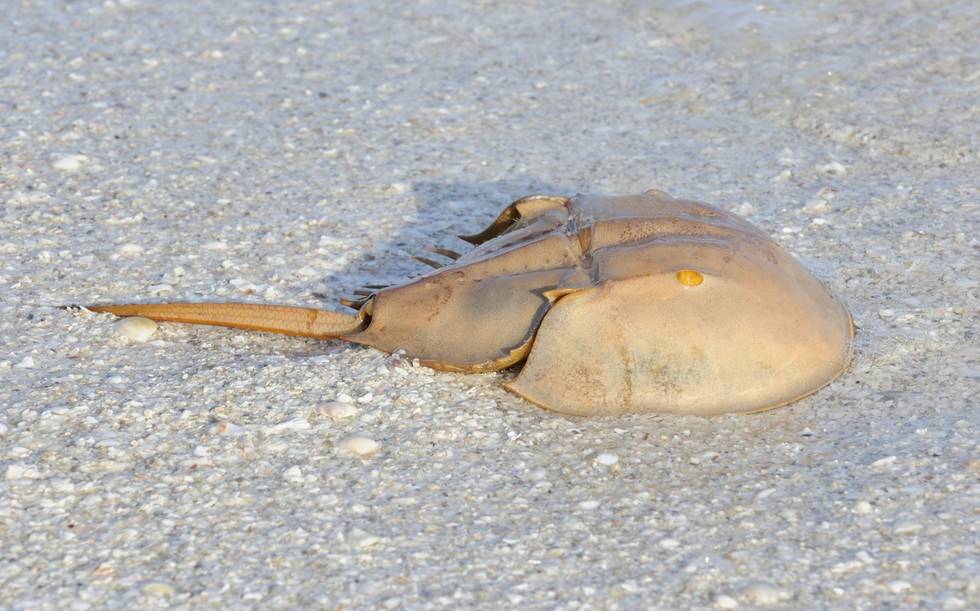
Aged 300 million years, horseshoe crabs are older than dinosaurs in about 200 million years. This mythical animal survived the massive extinction that wiped billions of other creatures. The female can lay 90,000 eggs, feeding countless bird species and entire ecosystems. Only 10 of those eggs survive.
And if you did not know, the amazing blue blood of these animals is being used to test any vaccine you ever recieved.
Half a million horseshoe crabs are caught each year, and are bleeding in associated laboratories to pharmaceutical companies. Time spent by the animal being tied as they pull out their blood for 24 to 72 hours. Bottles filled with their own blood, spectacular blue color, and then they use it to test vaccines for harmful bacteria.

“The problem is that these companies need a large supply of blood from living crabs”, says an article in 2014 in The Atlantic. “Horseshoe crabs live on the sea floor. When they want to breed, they are swimming in shallow water, and those who catch them, grab them straight off their living environment”.
The article also says the chances of the female to produce offspring after bleeding is much lower.
This is what causes the thinning of the horseshoe crab population. According to the IUCN Red List (a list of endangered animals), the horseshoe crab is almost considered endangered animals with real danger of becoming extinct. In addition, there is a decrease in the population of the birds that feed from the eggs of the horseshoe crab.

Why is there no alternative? Like every time the question is raised about the use of animals in laboratories, the issue is becoming increasingly complex. But the short answer is that a number of alternatives are being developed.
The danger is that when the horseshoe crabs will not be important for large and influential companies no longer, it may be possible that humans will no longer care about their decreased number, and a destruction of habitat will become a threat to survival.